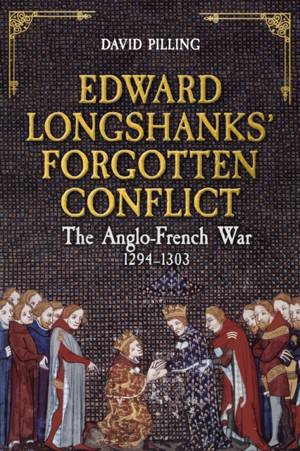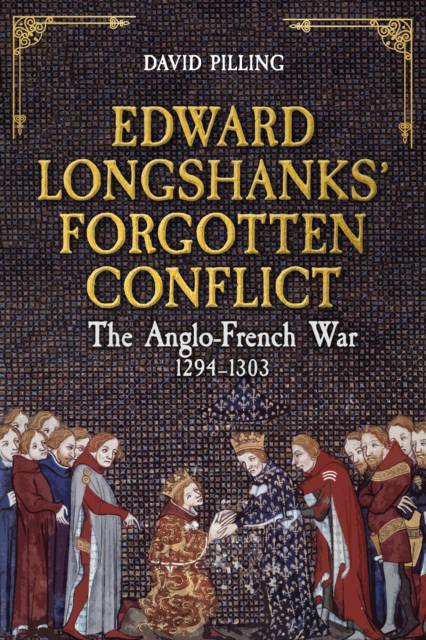
- Afhalen na 1 uur in een winkel met voorraad
- Gratis thuislevering in België vanaf € 30
- Ruim aanbod met 7 miljoen producten
- Afhalen na 1 uur in een winkel met voorraad
- Gratis thuislevering in België vanaf € 30
- Ruim aanbod met 7 miljoen producten
Zoeken
Edward Longshanks' Forgotten Conflict
The Anglo-French War 1294-1303
David Pilling
Hardcover | Engels
€ 32,45
+ 64 punten
Omschrijving
The Anglo-French war of 1294-1303 has not been the subject of a major study since the early 1900s. Recent histories tend to treat it as a sideshow compared to Edward I's wars in Wales and Scotland, which gives a false impression. In reality the Welsh and Scottish campaigns were distractions, and Edward regarded the war against France as his main focus. The main issue at stake was the defence and recovery of Aquitaine, the last substantial piece of the so-called 'Angevin empire'. To that end Edward spent enormous sums of money on recruiting allies in the Low Countries and the Holy Roman Empire. Edward's rival, Philip IV, also recruited allies to counter Edward, until the conflict engulfed much of Western Europe. The result was a series of military stalemates, demonstrating that neither England nor France could achieve outright victory in a head-to-head conflict. There were plenty of bloody incidents and much hard fighting: the hanging of Gascon prisoners from the walls of Rions in 1295, for instance, or the epic thirteen-week siege of Saint Sever. David Pilling places the war in its proper context and argues it was a vital step on the road to the more famous conflict we remember as the Hundred Years War.
Specificaties
Betrokkenen
- Auteur(s):
- Uitgeverij:
Inhoud
- Aantal bladzijden:
- 256
- Taal:
- Engels
Eigenschappen
- Productcode (EAN):
- 9781398113510
- Verschijningsdatum:
- 15/03/2024
- Uitvoering:
- Hardcover
- Formaat:
- Genaaid
- Afmetingen:
- 156 mm x 234 mm
- Gewicht:
- 613 g

Alleen bij Standaard Boekhandel
+ 64 punten op je klantenkaart van Standaard Boekhandel
Beoordelingen
We publiceren alleen reviews die voldoen aan de voorwaarden voor reviews. Bekijk onze voorwaarden voor reviews.











